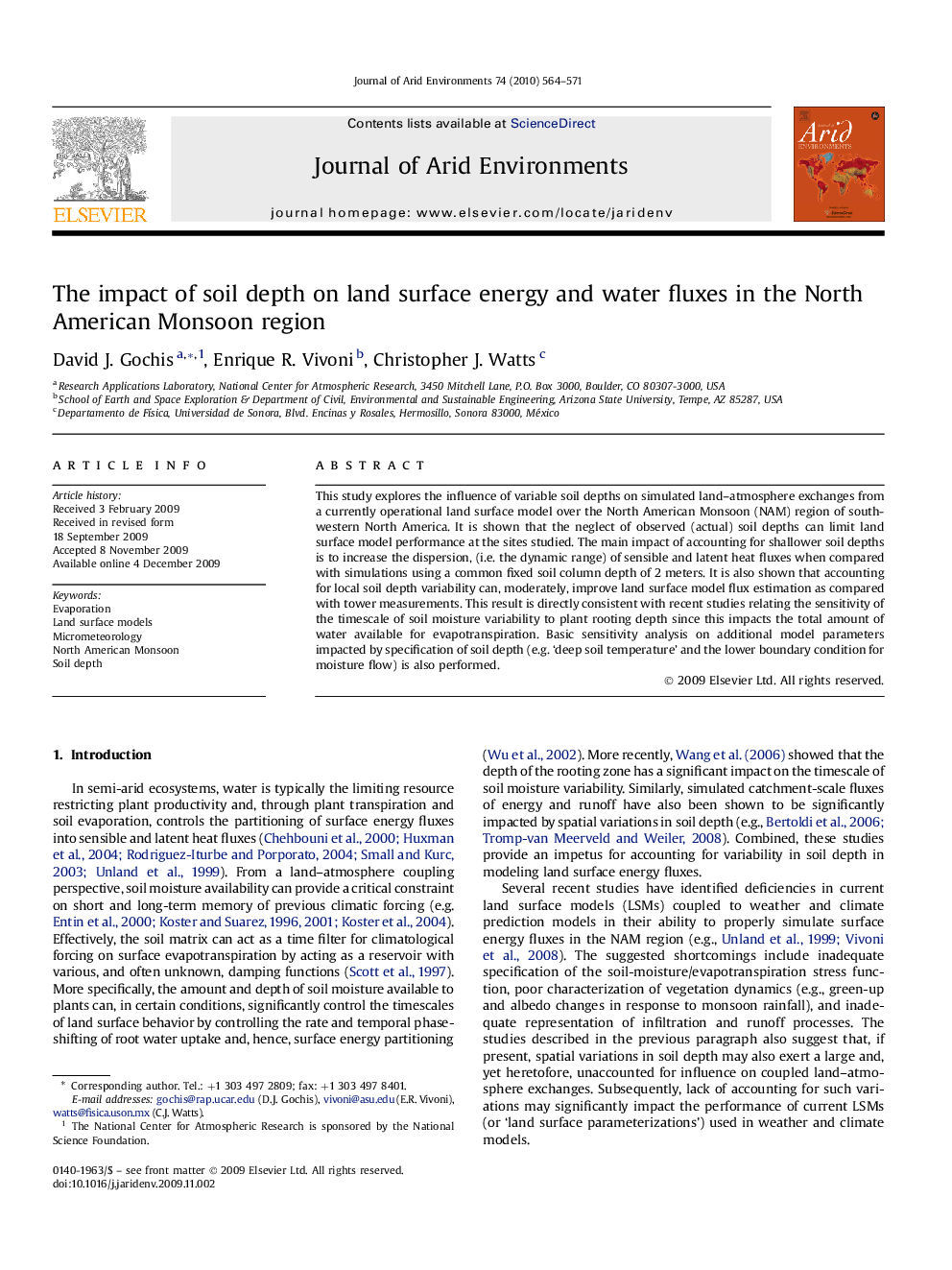| Article ID | Journal | Published Year | Pages | File Type |
|---|---|---|---|---|
| 4394230 | Journal of Arid Environments | 2010 | 8 Pages |
Abstract
This study explores the influence of variable soil depths on simulated land-atmosphere exchanges from a currently operational land surface model over the North American Monsoon (NAM) region of southwestern North America. It is shown that the neglect of observed (actual) soil depths can limit land surface model performance at the sites studied. The main impact of accounting for shallower soil depths is to increase the dispersion, (i.e. the dynamic range) of sensible and latent heat fluxes when compared with simulations using a common fixed soil column depth of 2 meters. It is also shown that accounting for local soil depth variability can, moderately, improve land surface model flux estimation as compared with tower measurements. This result is directly consistent with recent studies relating the sensitivity of the timescale of soil moisture variability to plant rooting depth since this impacts the total amount of water available for evapotranspiration. Basic sensitivity analysis on additional model parameters impacted by specification of soil depth (e.g. 'deep soil temperature' and the lower boundary condition for moisture flow) is also performed.
Related Topics
Physical Sciences and Engineering
Earth and Planetary Sciences
Earth-Surface Processes
Authors
David J. Gochis, Enrique R. Vivoni, Christopher J. Watts,
